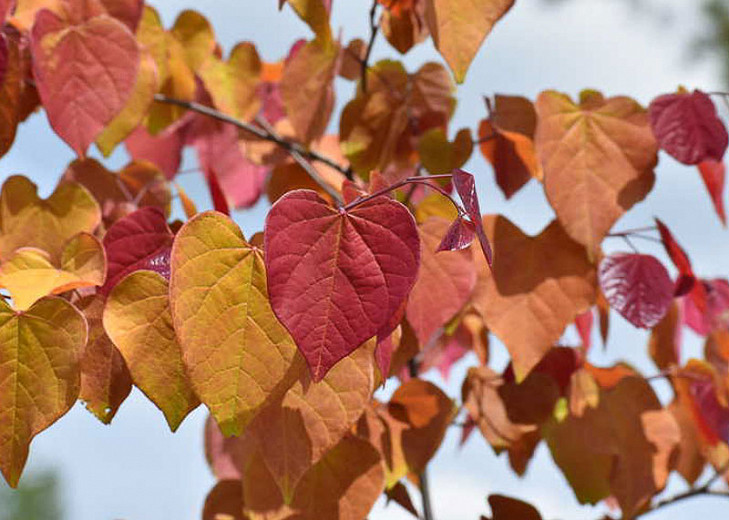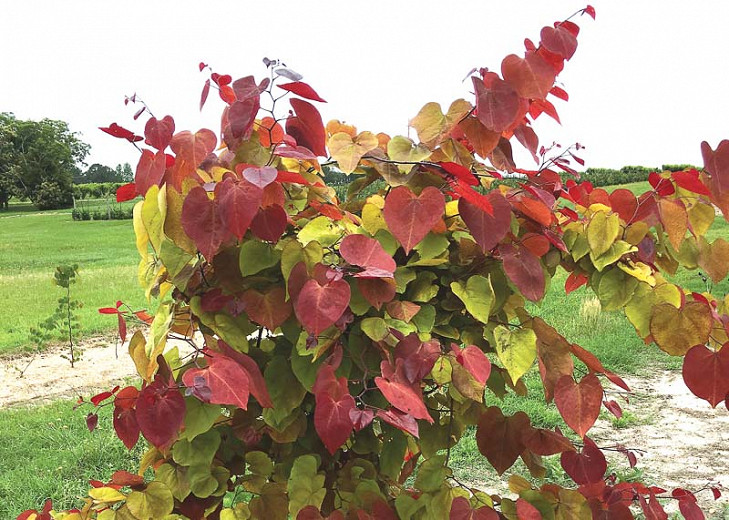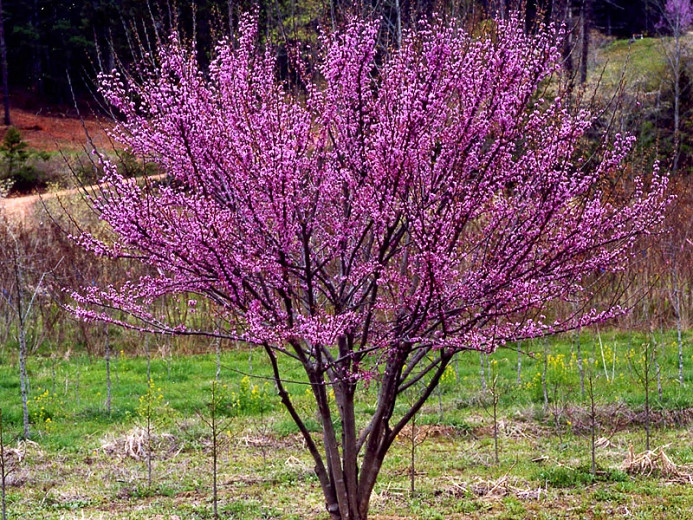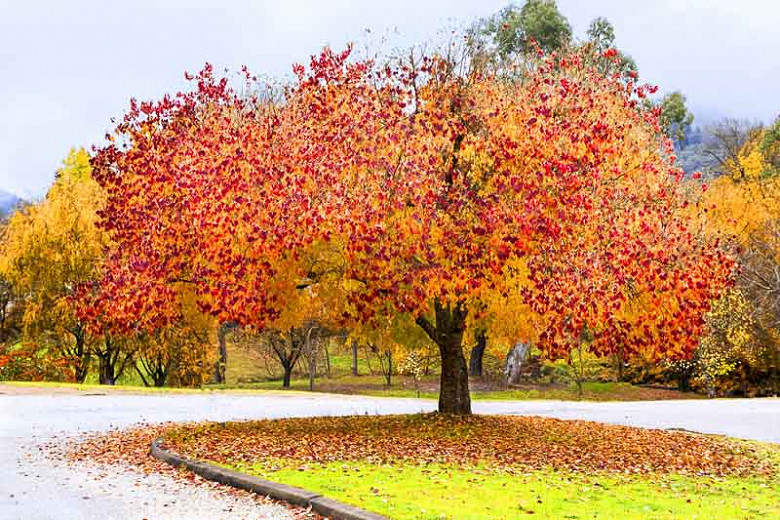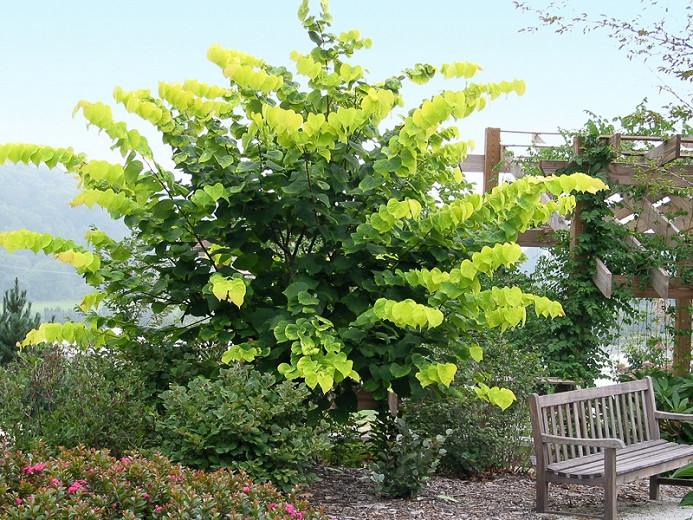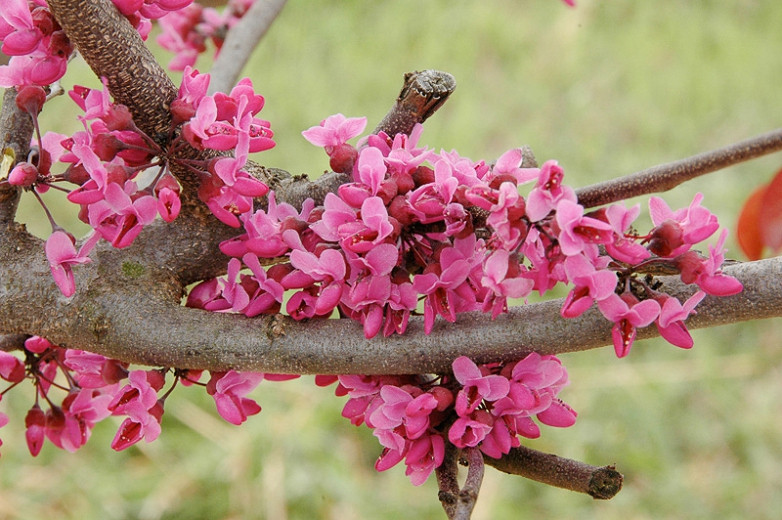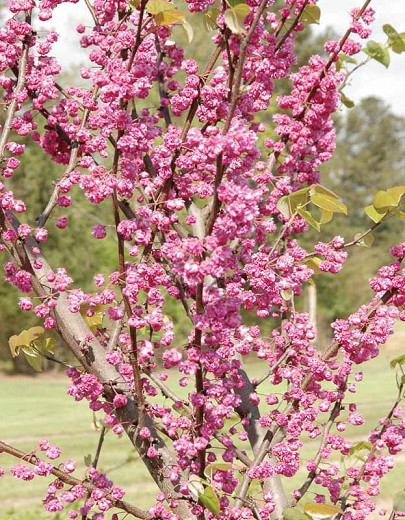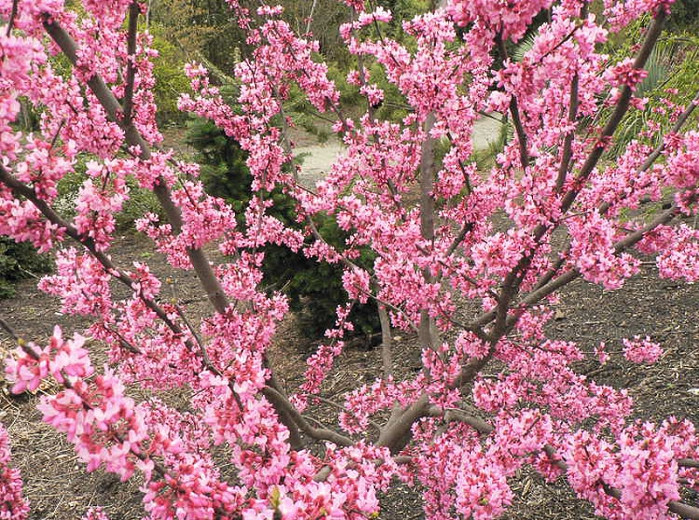Cercis canadensis Flame Thrower (Eastern Redbud)
Prized for its colorful foliage, Cercis canadensis Flame Thrower (Eastern Redbud) is a fairly small deciduous tree with multiple seasons of interest. A profusion of pea-like dark pink flowers held in clusters cover the bare branches in the spring, before the foliage emerges, creating a most dramatic display. The foliage of heart-shaped, glossy red leaves gradually turns to beautiful shades of orange, yellow, and green as it ages. The impressive color mix is persistent from spring through fall, often showing four to five different shades on a single branch. As the leaves drop, they reveal the pleasing silhouette of this eastern redbud. Easy to care for and great for smaller gardens or even containers. Developed by the JC Raulston Arboretum at NC State University.
- Grows up to 15-20 ft. tall (450-600 cm) and 15 ft. wide (450 cm).
- A full sun to part shade lover, this Redbud is easily grown in well-drained soils. Performs best in moderately fertile soils with regular and consistent moisture. The best flower production is obtained in full sun, but part shade is best in hot summer climates. Needs a winter chill before the flowers set properly.
- Perfect choice as a specimen plant or for shrub borders.
- Attracts birds, butterflies, and bees.
- Generally pest free. Watch for canker, verticillium wilt, dieback, leaf spots, mildew, and blights. Deer resistant.
- Does not transplant well. It should be planted when young and left undisturbed.
- Needs very little pruning. Remove diseased, damaged congested, or crossing shoots.
- Propagate by semi-hardwood cuttings.
- Cercis canadensis species is native to eastern and central North America from Connecticut to New York to southern Ontario and the Great Lakes south to western Texas and Florida.
Requirements
| Hardiness | 5 – 9 |
|---|---|
| Heat Zones | 2 – 9 |
| Climate Zones | 1, 1A, 1B, 2, 2A, 2B, 3, 3A, 3B, 4, 5, 6, 7, 8, 9, 10, 11, 12, 13, 14, 15, 16, 17, 18, 19, 20, 21, 22, 23, 24 |
| Plant Type | Trees |
| Plant Family | Cercis – Redbuds |
| Exposure | Full Sun, Partial Sun |
| Season of Interest | Spring (Early,Mid,Late)Summer (Early,Mid,Late)Fall |
| Height | 15' – 20' (4.5m – 6m) |
| Spread | 12' – 15' (3.6m – 4.5m) |
| Water Needs | Average |
| Maintenance | Low |
| Soil Type | Chalk, Clay, Loam, Sand |
| Soil pH | Acid, Alkaline, Neutral |
| Soil Drainage | Well-Drained |
| Characteristics | Showy |
| Tolerance | Clay Soil, Deer |
| Attracts | Bees, Butterflies, Hummingbirds |
| Garden Uses | Beds and Borders, Patio and Containers, Small Gardens |
| Garden Styles | City and Courtyard, Informal and Cottage, Traditional Garden |
